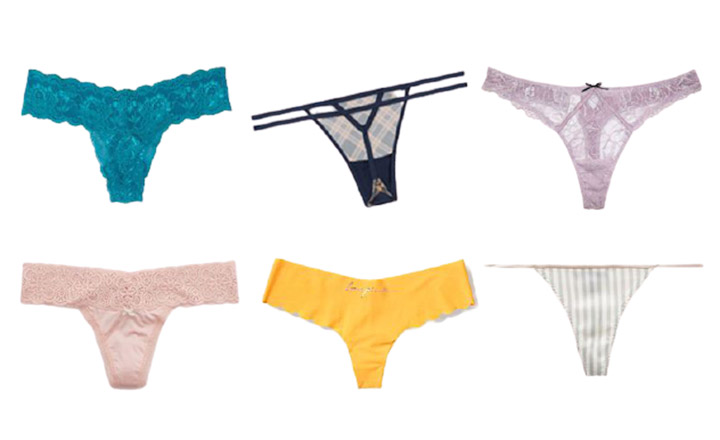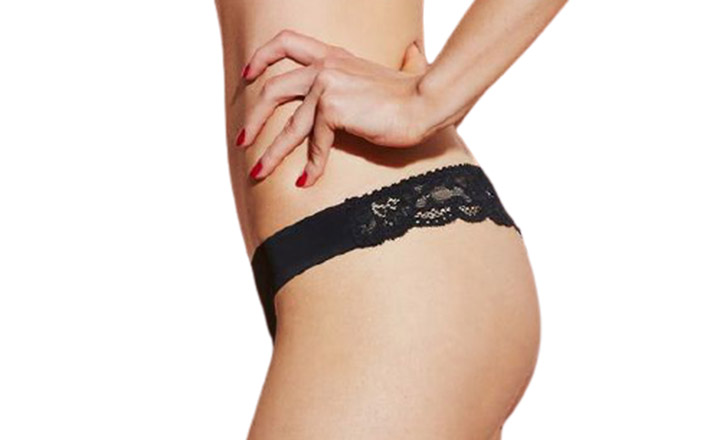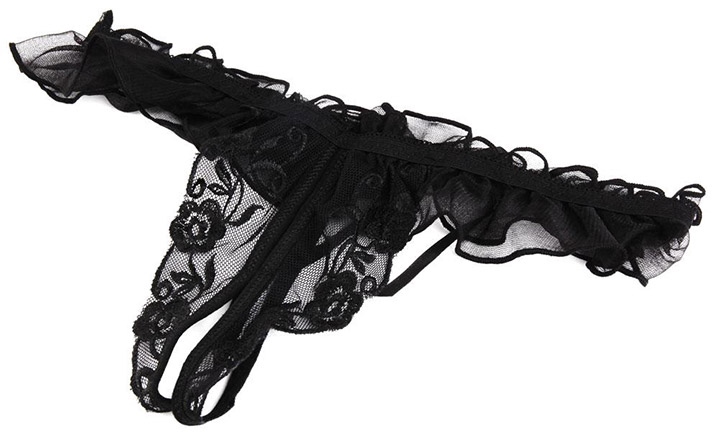Thongs, despite the (admittedly deserved) reputation of being possibly the most uncomfortable underwear on the planet, are still massively popular.
There’s a good reason for that – they’re the least noticeable underwear around. Whenever you’re wearing something tight-fit or made of thin fabric, you really can’t do better than thongs unless you go commando.
They really do let you expand your wardrobe and adjust your outfit options for the occasion without having to worry about the panty lines.
If you can handle the wedge, of course.
Here’s what you need to understand about thongs though: nobody is comfortable wearing thongs from the get-go.
Getting used to them is a process you need to invest some time and effort in. And while investing time in learning how to wear underwear might sound a little weird, the end results are worth it.
So here’s the strategy that worked for me and that I tend to recommend others when asked. I’d like to think that at this point it has been proven to be basically foolproof.
How to Get Used to Thongs
1. Learn About Thong Types

First things first: there are three basic thong types.
- The traditional thong which offers full front coverage and wide waistband, with a narrow strip that’s supposed to slide up your bum;
- The tanga – which covers the upper half of the buttocks and leaves the bottom half revealed;
- The g-string which is the “skimpy” version of traditional thongs: narrow waistband, little coverage in the front and a very thin strip of fabric in the back. G-strings are also the most likely to give you a “muffin top” because the waistband is usually so thin.
I’d advise you to start with the “traditional” design and move onto tanga/g-strings after you’ve got that one down.
2. Choose the Right Size

This. This will either make or break it for you. Because the whole idea of thongs is that there should be no extra lines anywhere on the cloths, the thongs are designed in a way that should feel like a second skin around your nether region.
This is what makes them so comfortable after you get used to wearing them – after getting over “the wedge” you aren’t supposed to feel them at all.
But reaching that level of comfort becomes much harder when your thongs aren’t the right size. They shouldn’t be either too tight or too loose.
What works with regular ol’ underwear, doesn’t work with thongs (any type of them).
While it might sound a little wasteful, it’s better to buy several thongs and try them out, finding the size the fits you to the tee, then waste the money, time, AND effort on thongs that don’t fit simply to fail in the end.
3. Choose the Right Material

I’m sure you know at least a couple of girls that can run a marathon in a skimpy lacy g-string, but that’s not you. Yet.
While getting used to thongs, the fabric they’re made of matters just as much as size. Because the aim is to get all the little things that might make you uncomfortable out of the way, so you can concentrate on the big one (the wedge).
Choose soft and breathable fabrics that won’t cause any irritation to the skin. 100% cotton is probably the best option, but linen could also work.
Avoid synthetic fabrics such as nylon, and polyester. You should also try to avoid silk: contrary to popular opinion it is not a breathable fabric and acts the same as synthetics do: traps heat and moisture, becoming uncomfortable (and somewhat dangerous since accumulated heat and moisture help the bacteria spread) after a while.
Yet, if you’re choosing thongs for everyday use and not as lingerie, it’s still better to choose silk or satin ones over laces, since lace is most likely to show through tight bottoms – thus negating the whole “underwear invisible under clothes” point.
(They’re great for bedroom though).
4. Make the Process Gradual

Do not expect to fall in love with thongs on the first try. Give it time. And when I say time, I mean time, not day or two.
Start by wearing it for around 10-15 minutes when at home at least 2-3 times a week, and increase by around 5 minutes every 3 sessions. When you start noticing that the feeling is becoming familiar, you can start wearing them out for small outings (keep an extra pair of undies in the bag to change out of them, if you start feeling uncomfortable).
Do not start out with lengthy events and night-outs. Think of thongs as a pair of Louboutin heels at this point: yes they’re very pretty and have a very nice quality of making you feel extra sexy, but they’re not necessarily for lengthy use.
After several weeks, you should start noticing that thongs barely even register after putting them on. This is the indicator you’ve been waiting for: the Louboutins have graduated to sneakers. Go out and have fun without thinking about your underwear!
5. Do the Research

This might sound a little redundant, but why not? There are all types of information you can freely get on the internet, and thongs aren’t an exception. Read up about which models people enjoy the most, what are the pros and cons, what to look out for, etc.
A little extra research has never hurt anybody (and has saved many a wallet)
And keep in mind that thongs aren’t for everyone. While many people claim that they barely even register after you get used to and over the wedge – you might never get to that point, even if you find the best-fitted thong made out of purest softest cotton out there.
Just don’t rush and give up prematurely.





